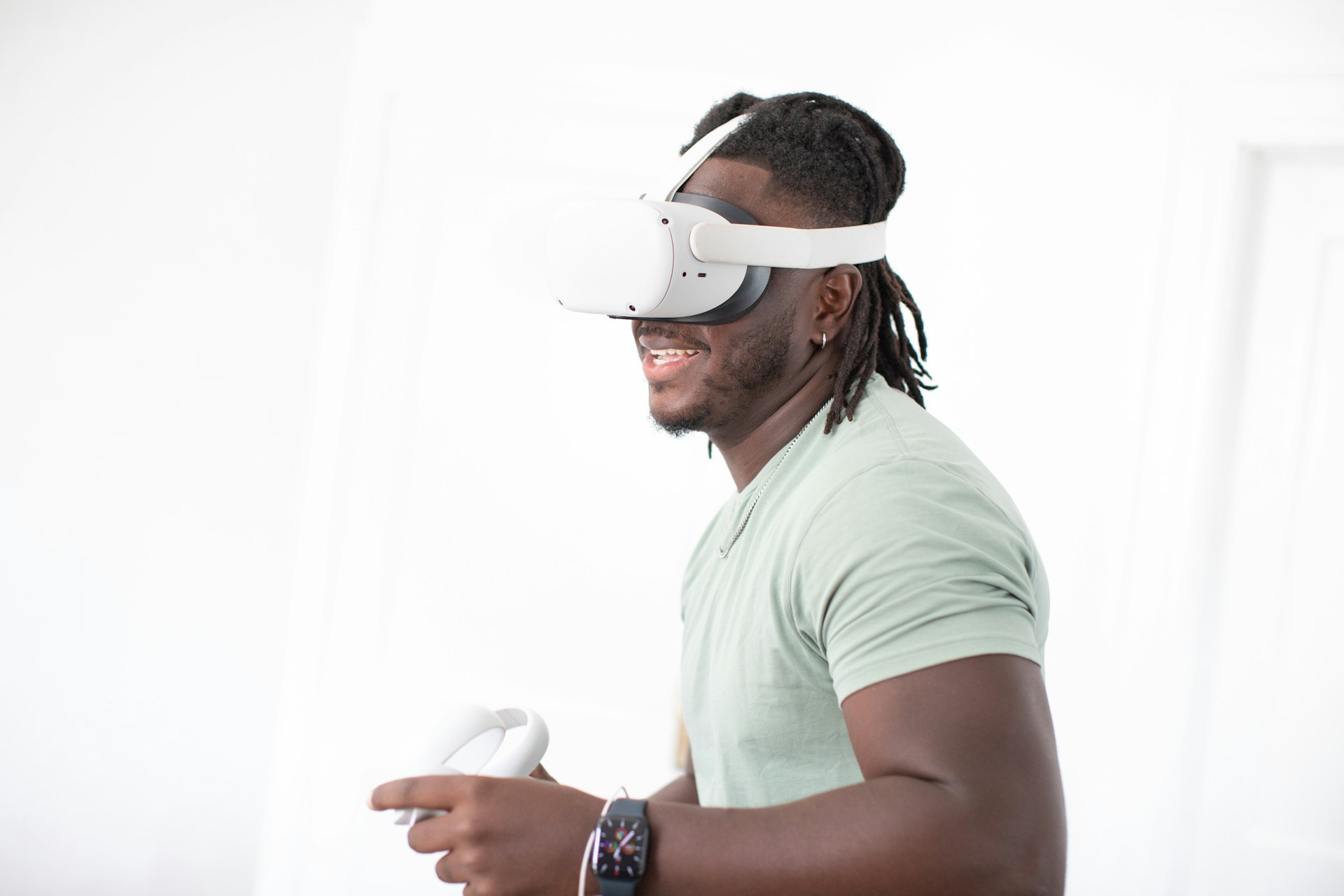Unlocking Personalized Digital Experiences with Neuro-Adaptive UX Interfaces

Photo by Growtika on Unsplash
Introduction: The Next Evolution in User Experience
Digital interfaces are entering a new era where personalization transcends demographics and preferences, venturing into the realm of brain activity. Neuro-adaptive interfaces are at the forefront of this revolution, enabling real-time adaptation of user experiences based on cognitive states, emotions, and neural signals. This technology transforms users from passive operators to active participants, forging intuitive, empathetic, and highly personalized digital environments. [1]
What Are Neuro-Adaptive Interfaces?
Neuro-adaptive interfaces (NAIs) integrate neuroscience and user experience (UX) design, using data from brain-computer interfaces (BCIs) and neural sensors to monitor cognitive and emotional states. These systems analyze neural signatures-unique patterns of brain activity-to inform interface adaptation, making interactions more responsive and individualized. [2]
Core Benefits of Neuro-Adaptive UX Design
Implementing neuro-adaptive principles in UX design provides several critical advantages:
- Real-Time Personalization: Interfaces adjust instantly to user fatigue, stress, or engagement levels. For instance, a productivity platform can simplify its menu if neural data signals mental fatigue. [1]
- Reduced Cognitive Friction: NAIs are invaluable in high-stakes scenarios, such as healthcare or aviation, where they streamline complex controls during periods of overload. [2]
- Enhanced Accessibility: These systems open up digital environments for users with cognitive, motor, or emotional challenges, making technology more inclusive. [5]
- Empathetic Feedback Loops: NAIs can detect stress and respond with soothing visuals or cues, fostering a sense of care and reducing user frustration. [1]
Design Principles for Personalized Brain-Aware UX
Effective neuro-adaptive UX design hinges on several emerging principles:
- Transparency: Always inform users when neural data is being collected and processed. Provide options to opt in or out, building trust and ensuring ethical compliance. [5]
- Simplicity First: Begin with a clean, functional baseline interface. Adaptation should enhance, not complicate, the experience. [1]
- Support, Don’t Hijack: Neuro-adaptive feedback should guide users toward their goals, not redirect them according to system priorities. [3]
- Micro-Adaptations: Small, context-sensitive tweaks-such as adjusting font size or reducing choice overload-are often more effective than sweeping changes. [1]
Implementing Neuro-Adaptive Interfaces: Step-by-Step Guidance
Building neuro-adaptive UX systems requires a structured approach:
- Define Objectives: Clearly articulate the goals for personalization-whether it’s improving accessibility, reducing cognitive load, or enhancing emotional engagement.
- Integrate Neural Sensors: Use established BCIs or wearable neural devices to capture brain signals. For consumer-grade applications, EEG headsets are commonly used. [2]
- Develop Adaptive Algorithms: Employ machine learning models trained on neural data to interpret emotional states, attention, and cognitive workload.
- Design Adaptive UI Elements: Identify interface components that can benefit from adaptation-such as navigation menus, content density, or feedback cues.
- Prioritize Ethical Considerations: Ensure user consent, data privacy, and transparent communication about neuro-adaptive features. [5]
- Test and Iterate: Use A/B testing and user feedback to refine adaptation strategies, balancing personalization with usability.
For organizations seeking to adopt neuro-adaptive UX, collaborate with neuroscience research labs or specialized consultancies. Search for “brain-computer interface development” or “neurodesign UX agencies” to identify reputable partners. Always verify credentials and ask for case studies.
Real-World Examples and Case Studies
Several industries are pioneering neuro-adaptive UX:
- Healthcare: Clinical apps adjust interface complexity based on patient cognitive fatigue, optimizing usability for neurological conditions. [1]
- Aviation: Flight simulators simplify controls for pilots during periods of high cognitive load, enhancing safety. [2]
- Education: Virtual learning platforms tailor lesson pacing and feedback based on student concentration and emotional state. [3]
- E-commerce: Sites personalize product recommendations and navigation flows using neurodesign insights, improving conversion rates. [4]
To explore neuro-adaptive applications in your field, search for “neuro-inclusive UX design” or review academic journals on human-computer interaction. Contact relevant professional associations for guidance.
Challenges and Solutions in Neuro-Adaptive UX
Despite the promise, integrating neuro-adaptive interfaces is not without obstacles:
- Data Privacy: Handling neural data requires stringent safeguards to protect user identity and personal information. Always use encrypted storage and transparent consent protocols. [5]
- Technical Complexity: Developing robust adaptive algorithms demands interdisciplinary expertise. Partner with neuroscience specialists and invest in ongoing staff training.
- Cost Constraints: Implementing advanced neural interfaces can be expensive. Start with small pilot projects using affordable consumer-grade devices, scaling up as ROI is demonstrated. [4]
- User Acceptance: Some users may be wary of brain-based personalization. Communicate benefits clearly, provide opt-out options, and educate users on privacy measures.
Alternative approaches include leveraging behavioral data (clicks, scrolling patterns) for adaptive UX when neural data collection is not feasible. Combine neurodesign principles with traditional usability testing for incremental improvements.
Ethical and Neuro-Inclusive Design: Building Trust
Ethical considerations are paramount in neuro-adaptive UX:
- Inclusivity: Design for users of varying cognitive abilities and backgrounds, ensuring fair access to adaptive features. [5]
- Transparency: Always disclose how neural data is used and processed.
- Consent: Implement clear opt-in/opt-out mechanisms and respect user choices.
To learn more, consult official guidelines from organizations such as the World Wide Web Consortium (W3C) on accessible design or search for “ethical neurodesign standards” from reputable sources.
How to Get Started with Neuro-Adaptive UX
If you want to implement neuro-adaptive UX in your digital product or service:

Photo by Milad Fakurian on Unsplash
- Research current neurodesign trends and best practices using search terms such as “neuroadaptive interface UX” and “brain-computer interface user experience”.
- Identify technology partners with expertise in neuroscience and UX design. Request case studies and technical documentation.
- Start with pilot projects targeting high-impact areas, such as accessibility or personalization. Measure outcomes and iterate.
- Stay informed on ethical, legal, and technical developments by subscribing to journals or joining professional associations in human-computer interaction.
Direct verified links to consult include:
- UX Bulletin: Neuroadaptive Interfaces in UX – Comprehensive overview of principles and benefits.
- Beetech Solutions: Neural Interfaces and Adaptive Design – Trends, examples, and implementation guidance.
- Aguayo: UX and Neuroscience – Neurodesign insights and practical tips.
- Bejamas: Neurodesign for Better UX – Case studies and workflow integration.
- Futuristic Bug: Neuro-Inclusive Ethical AI in Mobile UX – Neuro-inclusive design and ethical considerations.
If links are inaccessible or further information is needed, use detailed search queries and reach out to professional communities for personalized advice.
References
- [1] UX Bulletin (2025). Neuroadaptive Interfaces in UX: Adapting Based on Brain Activity.
- [2] Beetech Solutions (2025). Neural Interfaces and Adaptive Design: What Awaits Us Next.
- [3] Aguayo (2025). UX and Neuroscience: How Our Brain Shapes Digital Experience.
- [4] Bejamas (2025). Neurodesign: Using Neuroscience for Better UX Design.
- [5] Futuristic Bug (2025). Ethical AI in Mobile Apps: Neuro-Inclusive Mobile UX Design.
MORE FROM nicoupon.com













